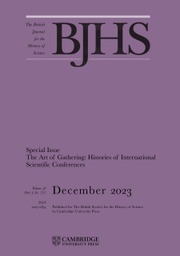After David Rothman’s Strangers at the Bedside (1991) and Albert Jonsen’s The Birth of Bioethics (1998), the present volume by Union College philosopher Robert Baker is the third major historical analysis of the development of American biomedical ethics during the second half of the twentieth century. Baker provides an ‘alternative’, or, more accurately, complementary, account, concerning the reasons for the ‘bioethical turn’ in medical ethics, and its key promoters (p. xv). Whereas Rothman and Jonsen highlighted the increasing and transformative involvement of non-medical actors such as lawyers, theologians and philosophers in moral aspects of medicine, which traditionally had belonged to the medical profession’s decision-making powers, Baker emphasizes the roles of various marginal medics and outsiders whose social awareness made them whistleblowers or activists. In part he uses the explanatory model of a ‘scandal-to-ethics code’, starting with Berlin physician Albert Moll’s protest, around 1900, against experiments on hospital patients without adequate information and consent. Subsequent chapters deal with the Nazi doctors’ ideology and their experiments on concentration camp inmates during the Second World War, the Nuremberg Doctors’ Trial after the end of the war, and the Nuremberg Code (1947) for the ethical conduct of trials on human subjects. The Nuremberg Code’s most prominent requirements were voluntary informed consent and protection of subjects or patients against harm, later taken up by the World Medical Association’s Declaration of Helsinki (1964). Baker sees memories and revelations of Nazi human experimentation as a key factor for the post-war whistleblowers who insisted on informed consent. Contrary to some Anglo-American clinical researchers, who regarded the Nuremberg Code as unnecessary for their work, critics saw a worrying lack of respect for patients and subjects in contemporary experiments that reminded them of Nazi medicine.
Lack of patient information and consent is the central thread running through Baker’s historical analysis, together with the identities and actions of the whistleblowers or ‘moralists’. Some of them, such as the London physician Maurice Pappworth and the Harvard anaesthesiologist Henry Beecher, became well known through their criticisms of clinicians in the 1960s who used their patients as ‘guinea pigs’ without valid consent. Other critics are much less known, for example Frances Kelsey, who after her academic training in pharmacology worked in the US Food and Drug Administration as a reviewer of licence applications. As Baker explains, not only did she refuse to grant approval for thalidomide, being unconvinced of the data for the drug’s safety and preventing through her scepticism serious deformations in countless American children, but also she generally demanded that new medications were tested on subjects who had given informed consent, drawing upon language from a 1962 draft version of the Helsinki Declaration. Another lesser-known whistleblower, whom Baker discusses in some detail, was former Vietnam War medic and San Francisco venereal-disease controller Peter Buxtun, who became important in uncovering during the 1960s the ethical failures of the Tuskegee syphilis study of the US Public Health Service, which had deliberately left about four hundred syphilitic, poor black men untreated and uninformed about the nature of their disease in order to examine its unhindered clinical progression and the post-mortem changes.
A link between the civil rights movement and the propagation of patients’ rights is shown by Baker through the example of George Wiley (1931–73), an African American former chemistry professor, war veteran and civil rights activist who championed the rights of patients treated under the new Medicaid and Medicare schemes. These rights were, as Baker emphasizes, conceptualized as ‘consumer rights’ which demanded broader information about treatment options than what was then seen as necessary for valid consent. Moreover, feminist organizations, such as the Boston Women’s Health Book Collective, were promoters of a patients’ bill of rights, which the American Hospital Association adopted in 1972.
In order to illustrate the ‘turn’ in the 1970s from medical ‘scientistic paternalism’ to the bioethical key concept of patient autonomy, Baker finally reviews the work of the US National Commission for the Protection of Human Subjects of Biomedical and Behavioral Research, which introduced institutional review boards (ethics committees) as ‘satellite regulators’, and the activities of the new brand of ‘bioethicists’, such Karen Lebacz, Albert Jonsen and Tom Beauchamp. An especially interesting detail, highlighted in Baker’s discussion of the commissioners’ Belmont report (1978), is that it initially envisaged only three principles, ‘respect for persons’, ‘beneficence’ and ‘justice’, but Beauchamp got the upper hand over Lebacz and Jonsen in replacing ‘respect for persons’ with ‘autonomy’ and adding ‘nonmaleficence’. This mantra of four principles was subsequently cemented by Beauchamp and James Childress in their bestseller textbook Principles of Biomedical Ethics (1979), the bible of modern bioethics to the present day.
Reflecting on his historical account of the basis and development of bioethics, Baker claims toward the end of his book that his is a narrative of the ethical influence of professional outsiders, such Pappworth and Buxtun, who were both of Jewish descent; of the female FDA bureaucrat Kelsey; of the ambitious Methodist Beecher; of black activist Wiley; and of others whose personal roles in the history of biomedical ethics have been underrated. Some readers may not fully agree with Baker’s claim (in its strong form, as suggested by his book’s subtitle) about the influence of minorities, and might privilege instead wider political changes in the provision of US health care and the institutionalization of bioethics in the Hastings Center and the Kennedy Institute of Ethics, as well as the spread of hospital ethics committees (HECs), as the reasons for the creation of ‘modern medical ethics’. A good example from Western Europe, pointing to the transformative influence of the Dutch HECs, is Noortje Jacobs’s recent study Ethics by Committee (2022). However, we can agree with Baker’s argument that the rise of bioethics was not a planned internal reform process of the organized medical profession, in particular not of the American Medical Association. In this sense he tells us an alternative story that can be recommended to students and scholars of bioethics alike.



